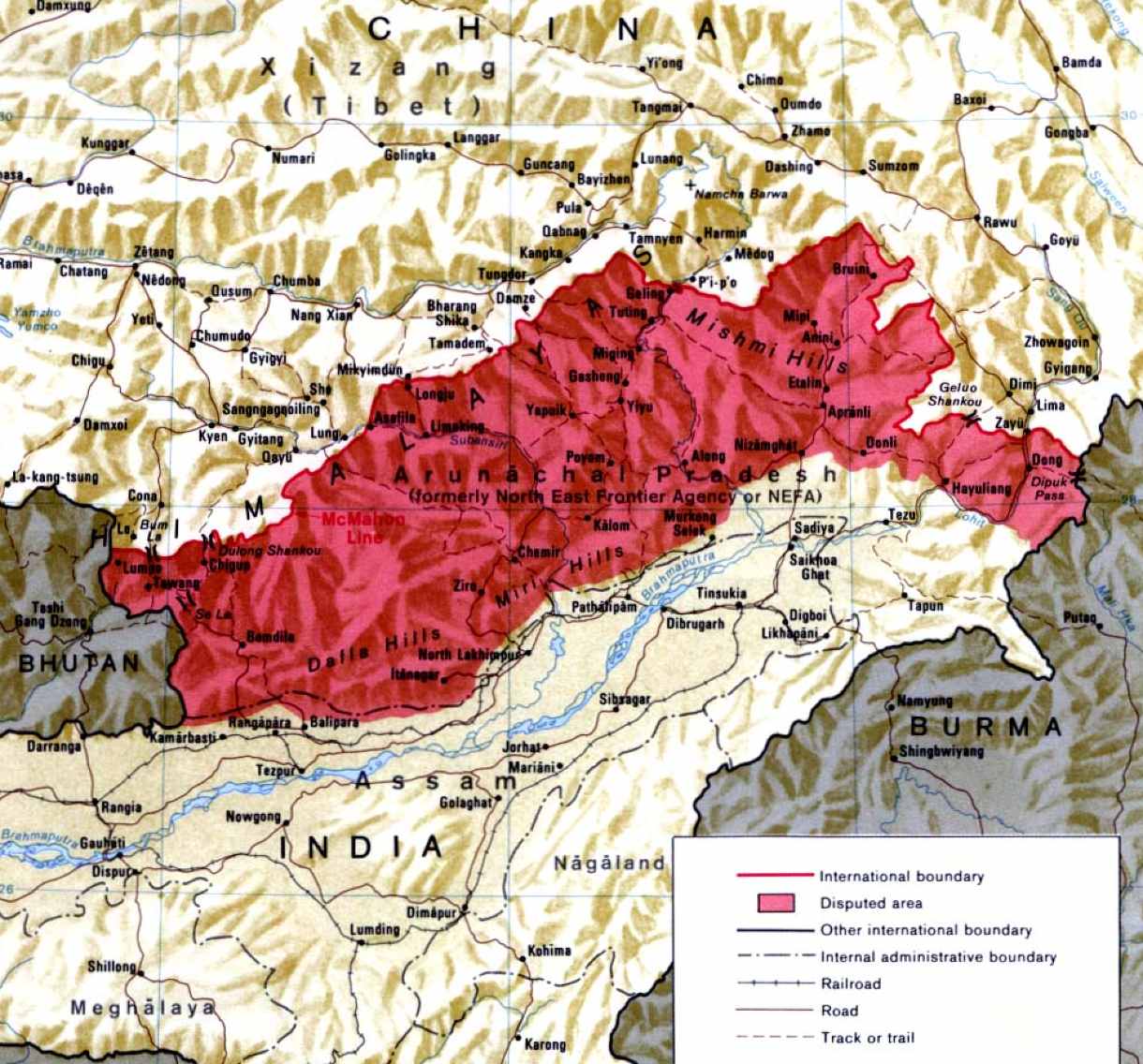The Indian Air Force (IAF) is wary of the radar network that China has built along the Line of Actual Control (LAC) it shares with India. The force is modernizing its inventory and continuously reassessing its deployment along the boundary to escape Beijing’s prying eyes.
‘We Are Losing The War’: Ukraine Aghast As Promised Supply Of 1M Artillery Rounds Evade Kyiv
The situation along the LAC has remained tense for over a year now, and complete disengagement has not occurred. The IAF, celebrating its 91st anniversary on October 8, also created its mountain radar network to match up to China.
IAF chief Air Chief Marshal VR Chaudhari told a press conference on October 3 that the force was aware of the enormous surveillance network created by China on its side along the 3,488-km LAC. The radar network is positioned to cover the entire northern frontier of India.
“The number of radars deployed by China is quite large…we keep reassessing our deployment along the LAC,” the IAF chief said. The IAF knows the adversary’s capability to look deep into Indian territory.
“Our counter is through our mountain radar project. Also, we have low-level lightweight radars that we continuously keep deploying and redeploying based on what we see developing across the borders. In the long run, we are looking at deploying mountain radars at these strategic locations to see equally deep into the adversary’s territory,” the IAF chief added.
India had indicated in November 2022 that it was looking to deploy Rs 10,000 crore worth of radars, most of which will be made in India, along the LAC, given the rising tensions with Beijing.
The main hurdle was the nod from the National Board of Wildlife. The approval came after a meeting chaired by Union Environment Minister Bhupender Yadav on January 27, 2023. During the meeting, NBWL okayed the transfer of 31.6 hectares of land from Ladakh’s Changthang Wildlife Sanctuary dedicated to IAF for mountain radar installation.
See Farthest, Reach Fastest, Hit Hardest: IAF’s Motto
The IAF, acknowledging that it is impossible to beat China in terms of number, is, thus, focussing on better training and dynamic tactics to outfox the giant on the northern and eastern front.
Air Chief Marshal Chaudhari explained: “In places where we cannot counter the numbers or the might of the adversary, we will deal with the challenges through better tactics and training. Our focus will remain dynamic and not have a fixed mindset on deploying assets in particular areas. We have flexible war plans, which we keep revising based on the ISR (Intelligence, Surveillance, and Reconnaissance) inputs that we get.”
China has deployed radars all along the northern border, and the IAF is aware of how deep the neighbor can see inside Indian territory, he said. Beginning in 2017, China has been ramping up its air defense capabilities to counter strikes from India and neutralize aerial threats.
It has now deployed a 3-D long-range air surveillance and guidance radar, JY27A, near the landmark spots of Pangong Lake in eastern Ladakh. The radar enables it to detect airstrikes over a radius of 500 km, which covers parts of Jammu and Kashmir, Himachal Pradesh, and Uttarakhand in the northernmost part of India.
In 2022, the satellite imagery around eastern Ladakh showed that China had constructed a new radome structure near the disputed Finger 4 and Finger 8 areas around Pangong Tso Lake.
The IAF has inducted the indigenously developed Low-Level Light Weight Radar (LLLWR) Aslesha Mk-I to keep an eye on China and other lightweight radars deployed depending on requirements. It will now deploy mountain radars to see equally deep into Chinese territory.
Infrastructure Race Along LAC
The Galwan Valley clash in 2020 has triggered an infrastructure race along the India-China border that passes through the mighty Himalayan ranges. Satellite images revealed massive infrastructure construction being undertaken by China.
With no signs of tensions easing between the two countries, India on September 12 laid the foundation of its highest airfield at Nyoma along the border. Once completed, it will be the closest air base to the India-China border on the Indian side.
The Indian and Chinese troops have practically been standing eyeball-to-eyeball along the border following the Galwan Valley clash in 2020. Since then, it has been downhill for the bilateral ties, with the tension between the two countries not abating anytime soon.
China is also aggressively developing infrastructure along the LAC. China has developed infrastructure near Karakoram Pass and Rechin La. It is also building permanent integrated habitable infrastructure, calling them model villages.
The IAF has also been demonstrating its reach. In the Indian Ocean, the IAF has conducted a Long Range of Missions to Djibouti, Maldives, and Malacca Strait. In ‘the Horn of Africa,’ Djibouti is China’s first overseas base.

“The Indo-Pacific region is the world’s new economic and strategic center of gravity and offers us both challenges and opportunities. The IAF, with its inherent capability to see the farthest, reach the fastest, and hit the hardest, will be critical in mitigating these challenges and will remain a fulcrum in projecting India’s might in the region.”
India has traditionally been a significant defense supplier for Maldives and has soldiers stationed on the island. But the recent electoral victory of pro-China candidate Mohamed Muizzu in the country’s presidential elections has jeopardized India’s military presence here. Muizzu has declared he would kickstart the removal of Indian soldiers stationed in the atoll nation, as pledged during his campaign.
The Malacca Strait, close to the Indian archipelago Andamans and Nicobar, is a small waterway that can be a significant bottleneck for the Chinese Navy and trade in case of conflict.
- Ritu Sharma has been a journalist for over a decade, writing on defense, foreign affairs, and nuclear technology.
- She can be reached at ritu.sharma (at) mail.com




